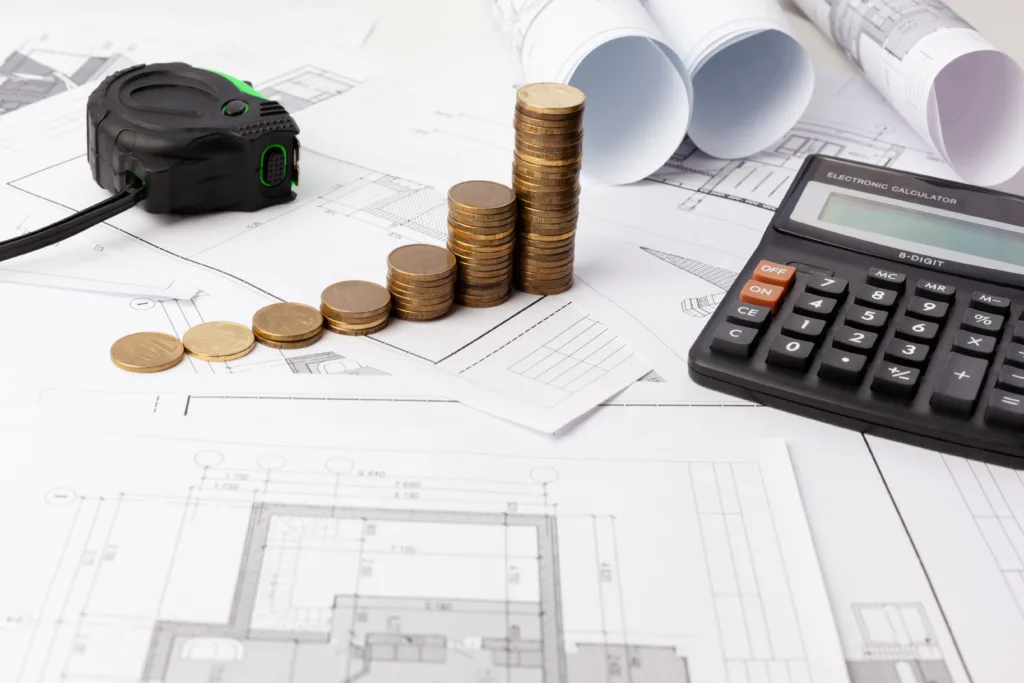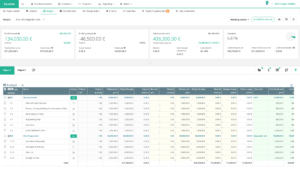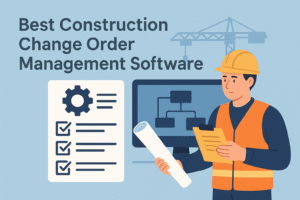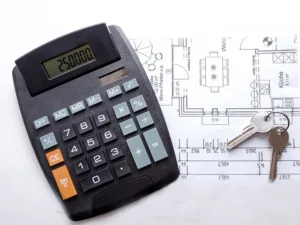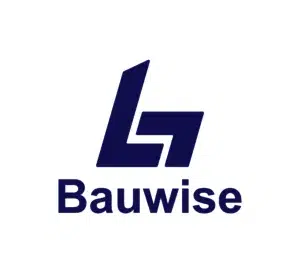In today’s rapidly changing economic landscape, the construction industry is grappling with a significant challenge: escalating costs. Whether it’s the price of raw materials, labor, or even regulatory compliance, everything seems to be on an upward trend. This continual rise in costs can potentially derail projects, squeeze profit margins, and place substantial stress on project managers who are on the frontline, ensuring everything runs smoothly despite these pressures.
Why should project managers in the construction sector be concerned about this? Quite simply, costs directly affect the viability of projects and the financial health of a company. The ability to manage and control these costs is a critical skill for any project manager. It’s what differentiates successful projects from those that end up over budget or, even worse, incomplete.
In this comprehensive guide, we delve into the issue of rising costs in the construction industry, with a particular focus on the role of project managers. We will explore the contributing factors, the impacts, and most importantly, the strategies to navigate this challenging situation. We will also be introducing Bauwise, a robust construction management software, and examine how it can be a game-changer in managing construction costs effectively.
Another significant factor contributing to the escalating costs in the construction industry is construction inflation, which encompasses the rising expenses of materials and labor, influenced by factors like currency exchange rate fluctuations and historical data trends.
Stay with us as we unravel these intricacies and equip you with knowledge that can be a real difference-maker in your role as a construction project manager.
Table of Contents
The Rising Cost Challenge in Construction
It’s no secret that the construction industry operates on thin margins. When costs rise, the impact on the bottom line can be considerable. But what exactly is causing this surge in costs that’s troubling construction project managers worldwide?
First, it’s important to understand that the costs in the construction industry are multifaceted. They include direct costs such as labor and materials, and indirect costs like equipment, overhead, and regulatory compliance. Each of these elements is subject to fluctuations due to numerous external factors.
Let’s start with material costs. The price of key building materials like steel, concrete, lumber, carpet, plywood, granite, and ceramic fixtures has been spiraling due to a combination of increased demand and supply chain disruptions. The shortage of building materials, stemming from pandemic-related shutdowns at manufacturers’ facilities and protectionist trade policies leading to tariff increases, has significantly impacted the acquisition times and shipping costs, further affecting the overall cost of construction projects. Factors such as global trade disputes and climate change-induced natural disasters have created a volatile market for raw materials.
On the labor front, the construction industry has been battling a chronic skill and labor shortage. With fewer skilled laborers available and firms paying higher salaries to attract workers, the cost of labor has naturally risen. This labor shortage has led to a loss of jobs in the industry, worker priorities shifting, and the need for intentional and long-term solutions to address these shortages. Plus, there’s the added challenge of the industry’s aging workforce, making it even more important to attract and retain talent, often at a higher cost.
The situation isn’t any better with indirect costs. Equipment is becoming more expensive due to advancements in technology. Overhead costs, such as insurance and administration, are also on an upward trajectory. Furthermore, the industry has seen increased regulatory scrutiny over the past few years, resulting in more time and money spent on ensuring compliance.
The culmination of these factors has led to a harsh reality: the cost of construction is rising, and it doesn’t seem to be slowing down any time soon. This mounting pressure is leading project managers to seek effective strategies and tools to manage costs without compromising the quality or safety of their projects.
Understanding Construction Cost Management
Now that we’ve outlined the myriad of factors causing construction costs to soar, it’s clear that managing these costs effectively is of paramount importance. But what does construction cost management truly entail, especially from the perspective of a project manager?
In the simplest terms, construction cost management is the process of estimating, allocating, and controlling the costs involved in construction projects. It goes beyond just crunching numbers; it’s about understanding how each decision, from the design stage to the final touches, affects the overall budget. An integral part of this is the estimating process, which requires early planning, design certainty, and collaboration with trade partners to enhance accuracy and streamline costs for materials and overall project management. It’s also about being proactive rather than reactive, predicting and mitigating potential cost overruns before they occur.
For a project manager, cost management is one of their most crucial roles. They’re the ones creating and managing budgets, tracking expenses, and making tough decisions when costs threaten to spiral out of control. But, they are not only gatekeepers of the budget. They also need to ensure that cost savings do not result in compromises to safety, quality, or the project’s timeline.
Effectively managing costs requires a strong understanding of the project’s scope, meticulous planning, and the ability to negotiate with suppliers and contractors. Additionally, it involves leveraging technology to streamline processes, improve accuracy, and provide real-time visibility into costs.
The construction project manager’s role in cost management, therefore, is a delicate balancing act. It’s about ensuring fiscal responsibility while keeping the project on track and meeting client expectations. It’s no easy task, particularly in an environment of escalating costs. However, it is not an insurmountable challenge, especially with the right tools and strategies in place.
As we venture further into this guide, we will reveal how construction management software like Bauwise can play a pivotal role in this aspect, allowing project managers to navigate the complex waters of cost management more effectively.
The Role of Technology in Managing Rising Construction Costs
When facing the trials of ballooning construction costs, it can feel as though you’re in a boxing ring, constantly bobbing and weaving to dodge a relentless flurry of punches. Thankfully, technology has become an invaluable cornerman in this fight, offering up powerful tools that can make a real difference in cost management.
It’s hard to overstate the transformative effect that technology has had on the construction industry. Once considered slow to adapt, the sector has seen a technological renaissance in recent years. We’ve witnessed the rise of Building Information Modeling (BIM), drone surveys, 3D printing, and more, all of which have drastically changed the industry landscape.
But perhaps one of the most significant shifts has been the adoption of construction management software. It’s a development that has fundamentally changed how project managers control costs, offering a level of precision, efficiency, and visibility that was previously unimaginable.
Construction management software brings all aspects of a project under one digital roof – from planning and scheduling to resource allocation and cost control. It allows project managers to view real-time data, track changes, and make informed decisions swiftly. This newfound agility and control can be a critical factor in managing escalating costs.
At the heart of this technological evolution is Bauwise, a construction management software solution designed specifically for the needs of project managers. In the next section, we’ll delve into the ways Bauwise can help you steer your project budgets safely through the stormy seas of rising costs.
How Bauwise Can Help Manage Rising Costs
In the world of construction project management, where every dollar counts and the stakes are high, having the right tools can make all the difference. One such tool that’s been making waves is Bauwise, a comprehensive construction project management software designed with project managers in mind.
What makes Bauwise an essential ally in the fight against rising construction costs? The answer lies in its capabilities that cater to the specific needs of cost management.
Firstly, Bauwise provides unparalleled clarity into your project’s financial landscape. Its dashboard gives you an immediate, comprehensive view of your costs, profit margins, and budget variances. With this real-time visibility, you can identify cost overruns early and make necessary adjustments before they snowball into larger problems.
Additionally, Bauwise has robust budgeting and forecasting tools. With these, you can create detailed cost estimates, plan your resources effectively, and predict future costs with a high degree of accuracy. This proactive approach is crucial in an era of escalating costs, where effective planning can mean the difference between project success and failure.
Bauwise also makes tracking and controlling costs a breeze. With its detailed cost tracking feature, you can see exactly where your money is going, which cost components are over budget, and where savings can be made. Moreover, its cost control features ensure that expenses stay within the defined limits, preventing unpleasant surprises down the line.
But Bauwise isn’t just about the numbers. It’s about empowering project managers to lead more efficiently and effectively. By automating time-consuming tasks, providing critical insights, and facilitating better communication among team members, Bauwise allows project managers to focus on what they do best: leading their teams to deliver successful projects, irrespective of the challenges that rising costs may present.
In the next section, we’ll share practical strategies for managing rising construction costs. These strategies, coupled with the power of Bauwise, can help project managers steer their projects towards success in this era of increasing expenses.
Strategies to Cope with Rising Costs in Construction
In the face of rising costs, merely acknowledging the challenge isn’t enough; it’s how you respond that makes the difference. Implementing a well-defined strategy can equip you to manage costs effectively and steer your projects towards a successful conclusion. Here are some key strategies that can aid you in this endeavor.
Advanced planning and cost forecasting: Begin with a detailed project plan and an accurate estimate of costs. Review past projects to inform your cost predictions and factor in potential changes in the price of materials or labor. This step is crucial in preventing budget overruns.
Effective resource management: Use your resources wisely. This includes not only materials and labor, but also equipment, time, and even the expertise within your team. Proper resource management can prevent waste and keep costs down.
Regular monitoring and updating of costs: Stay vigilant. Keep a close eye on your project’s financials, track all costs, and compare them with your budget. If costs are creeping up, you’ll be able to spot it quickly and take action.
Streamlining processes for efficiency: Look for ways to make your processes more efficient. This might involve reducing waste, improving communication, or automating repetitive tasks. The time and resources saved here can help control costs.
Additionally, managing cost and scheduling risks is essential in coping with rising costs. By identifying, assessing, and communicating these risks early and throughout the project, you can mitigate their impact and maintain project timelines and budgets.
Arming yourself with these strategies is a step in the right direction. But to truly take control of rising costs, you need the right tools to implement these strategies effectively. That’s where construction project management software, like Bauwise, comes into play.
In the next section, we’ll explore how Bauwise can be used to implement these cost-saving strategies. We’ll also share tips on how to use the software to its fullest potential, ensuring you get the most out of your investment.
Tips for Implementing Cost Management Strategies with Bauwise
Now that we’ve outlined some key strategies to manage rising construction costs, the next step is to put them into action. In this section, we’ll dive into how you can leverage Bauwise to implement these strategies effectively.
1. Master the Art of Planning and Forecasting:
With Bauwise’s robust planning and forecasting tools, you can create detailed project plans and cost estimates right at your fingertips. Use historical data from past projects within the system to inform your forecasts. Don’t forget to account for potential price increases in materials or labor.
2. Optimize Your Resource Management:
Utilize Bauwise’s resource management features to ensure optimal use of your materials, labor, and equipment. Monitor resource utilization and adjust allocations as needed to prevent waste and unnecessary costs.
3. Keep a Close Eye on Your Costs:
Regular monitoring of costs is made simple with Bauwise’s real-time reporting features. Set up automatic alerts for when costs are approaching or exceeding budget limits, giving you the chance to act swiftly.
4. Streamline Your Processes:
Bauwise can help streamline your operations and improve efficiency. Automate repetitive tasks, enhance communication among team members, and reduce waste by using the software’s various project management tools.
But remember, a tool is only as good as the person using it. To maximize the benefits of Bauwise, ensure that your team is adequately trained to use it. Encourage them to make full use of its features and regularly update the system with the latest project information. This way, everyone can contribute to effective cost management.
By integrating these strategies with Bauwise, you’re equipping yourself with a powerful defense against rising construction costs. But remember, the fight doesn’t end here. As the construction landscape evolves, so too should your cost management strategies.
In the next section, we’ll look towards the future and explore how cost management in the construction industry might change in the coming years.
Looking Towards the Future: The Evolution of Cost Management in Construction
The construction industry, like any other, doesn’t exist in a vacuum. It is constantly influenced by shifting economic, social, and technological trends. As we look to the future, it’s clear that cost management in construction will continue to evolve.
In this changing landscape, project managers need to stay agile, adaptable, and open to innovation. Let’s explore some potential developments and how they might impact cost management in the construction industry.
1. The Rise of Data-Driven Decision Making:
Data has become the new oil in the business world. The ability to collect, analyze, and interpret large amounts of data can provide valuable insights for cost management. Project managers can expect to leverage data even more in the future to make informed cost predictions and decisions.
2. Increased Use of Artificial Intelligence and Machine Learning:
AI and ML are already making their way into construction project management, and their use is only likely to grow. These technologies can automate complex tasks, improve accuracy in cost forecasting, and identify potential cost overruns before they occur.
3. Greater Emphasis on Sustainability:
As the world becomes more environmentally conscious, there is growing pressure on the construction industry to reduce its carbon footprint. This shift towards green construction might initially increase costs due to the use of sustainable materials and practices, but it can also lead to significant cost savings in the long run through energy efficiency and improved resource utilization.
4. Increased Adoption of Construction Management Software:
As we’ve discussed throughout this article, software like Bauwise has revolutionized cost management in construction. Its use is set to become even more widespread, with new features and capabilities that further enhance cost control and project management.
These are just a few of the many potential developments on the horizon. By staying informed and adapting to these changes, project managers can continue to effectively manage costs, even as they continue to rise.
In our final section, we’ll wrap up our discussion and provide some parting thoughts on managing rising costs in the construction industry.
Concluding Thoughts: Navigating Rising Costs with Confidence
Rising costs in the construction industry can be daunting, but they are not an insurmountable hurdle. As we’ve explored throughout this guide, effective cost management is both an art and a science, requiring careful planning, meticulous tracking, and strategic decision-making.
As project managers, you’re at the helm, guiding your projects through these turbulent financial waters. It’s not an easy task, and it’s one that carries immense responsibility. However, you’re not alone in this journey. Tools like Bauwise are at your disposal, providing the visibility, control, and insights you need to manage costs effectively.
Implementing the strategies we’ve discussed can make a significant difference in how you manage rising costs. But remember, the construction industry is dynamic and ever-evolving. Staying adaptable, embracing innovation, and continuously learning are all critical to staying ahead.
In the face of rising costs, remember that every challenge presents an opportunity for growth and improvement. By mastering cost management, not only can you lead your projects to success, but you can also contribute to a more sustainable, efficient, and innovative construction industry. For construction businesses and construction companies, applying these cost management strategies is crucial in managing financial aspects, increasing profits, boosting sales, and implementing operational efficiencies to navigate the challenges of rising costs effectively.
Related posts
Read our other articles where you can find useful and relevant information about managing your construction business profitably:
- How to Start a Construction Company: 10 Steps to Start Your Own Business
- How to Increase Your Construction Company’s Profitability
- Enhancing Construction Efficiency: Key Factors and Strategies
- How to be a better construction project manager?
- Master the Bid: Proven Strategies on How to Win More Construction Bids
FAQ
How can you deal with rising construction costs and inflation?
Dealing with rising construction costs and inflation requires a multifaceted approach. First, it’s critical to implement a solid cost management strategy. This includes precise planning and forecasting to anticipate and prepare for future costs, along with meticulous tracking of actual expenses to promptly identify and address any budget overruns. Second, consider locking in prices with suppliers and subcontractors where possible to guard against inflationary pressures. Next, improving operational efficiency can help mitigate cost increases; this might involve streamlining processes, leveraging technology, and reducing waste. Finally, ensure that contracts have clauses allowing for price adjustments due to inflation, protecting your financial interests in the event of unforeseen economic changes. By combining these strategies, construction project managers can better navigate the challenges of rising costs and inflation.
Why Material Costs Are Increasing?
The surge in material costs in the construction industry can be attributed to several factors. Firstly, disruptions in supply chains due to the COVID-19 pandemic have resulted in shortages of essential materials, driving up prices. Additionally, geopolitical tensions and trade restrictions have affected the global flow of goods, contributing to higher costs. Natural disasters and environmental factors have also impacted the production of raw materials, further straining supply. Moreover, inflation and increased demand for construction, particularly in growing economies, are exerting upward pressure on prices. Lastly, the shift towards sustainable construction practices has led to increased demand for green materials, which can be more expensive. Combined, these factors have resulted in significant increases in material costs for the construction industry.
About the Author

Taavi Kaiv
Taavi Kaiv is a construction specialist with over ten years of experience in the construction industry. Taavi is an accomplished construction project manager with many successful projects that have been completed under his guidance. Taavi holds a master’s degree in construction management from the Tallinn University of Technology. View profile

